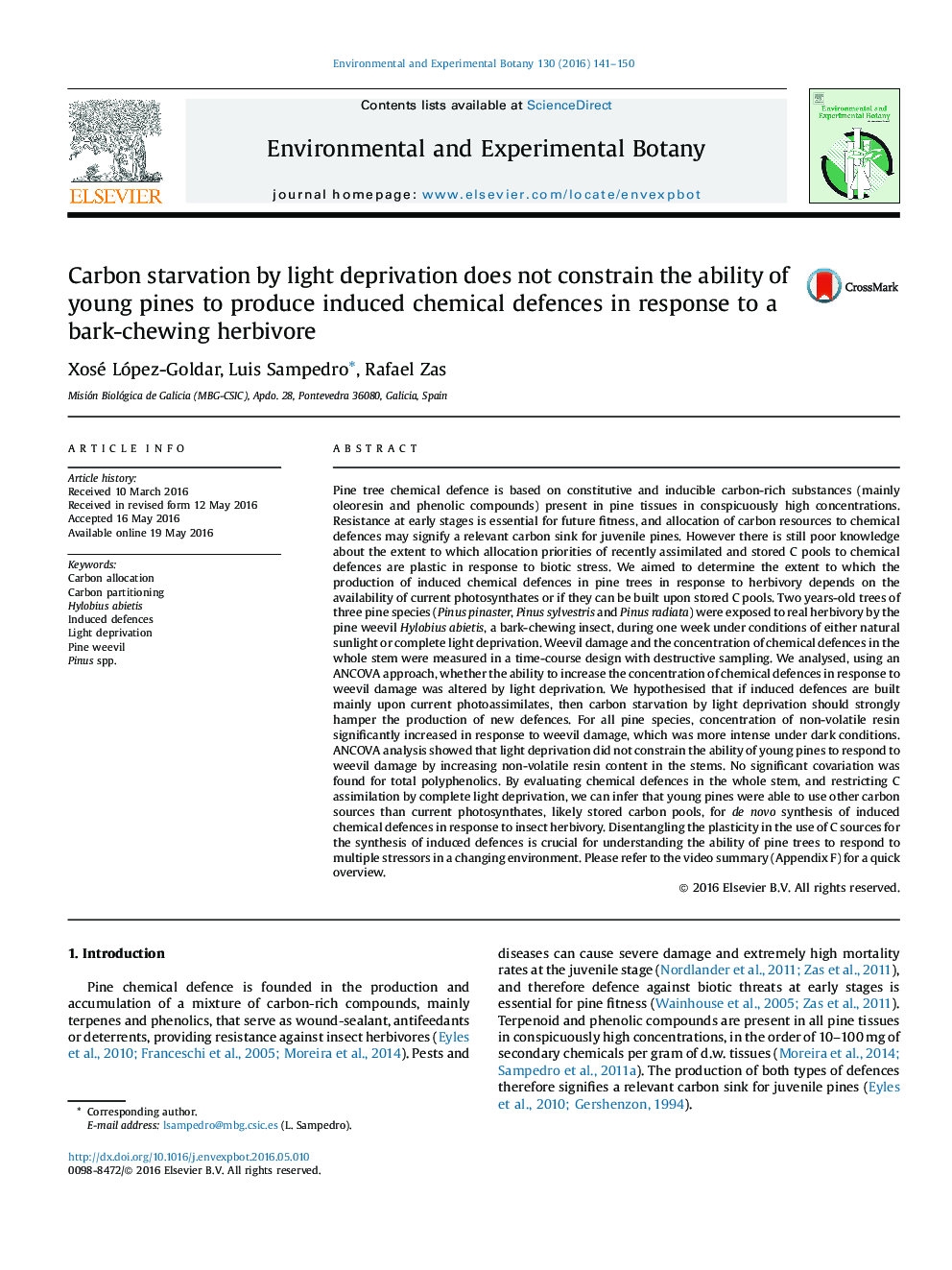| کد مقاله | کد نشریه | سال انتشار | مقاله انگلیسی | نسخه تمام متن |
|---|---|---|---|---|
| 4554029 | 1628047 | 2016 | 10 صفحه PDF | دانلود رایگان |
• Young pines of three species were exposed to insect herbivory in darkness during 7 days.
• In all species, pine weevil fed more in darkness than under natural sunlight.
• Young pines increased their chemical defences proportionally to the weevil feeding.
• Light-deprivation did not constrain the ability of pines to produce induced defences.
• Current assimilated C does not appear to be mandatory for synthesis of resin induced defences.
Pine tree chemical defence is based on constitutive and inducible carbon-rich substances (mainly oleoresin and phenolic compounds) present in pine tissues in conspicuously high concentrations. Resistance at early stages is essential for future fitness, and allocation of carbon resources to chemical defences may signify a relevant carbon sink for juvenile pines. However there is still poor knowledge about the extent to which allocation priorities of recently assimilated and stored C pools to chemical defences are plastic in response to biotic stress. We aimed to determine the extent to which the production of induced chemical defences in pine trees in response to herbivory depends on the availability of current photosynthates or if they can be built upon stored C pools. Two years-old trees of three pine species (Pinus pinaster, Pinus sylvestris and Pinus radiata) were exposed to real herbivory by the pine weevil Hylobius abietis, a bark-chewing insect, during one week under conditions of either natural sunlight or complete light deprivation. Weevil damage and the concentration of chemical defences in the whole stem were measured in a time-course design with destructive sampling. We analysed, using an ANCOVA approach, whether the ability to increase the concentration of chemical defences in response to weevil damage was altered by light deprivation. We hypothesised that if induced defences are built mainly upon current photoassimilates, then carbon starvation by light deprivation should strongly hamper the production of new defences. For all pine species, concentration of non-volatile resin significantly increased in response to weevil damage, which was more intense under dark conditions. ANCOVA analysis showed that light deprivation did not constrain the ability of young pines to respond to weevil damage by increasing non-volatile resin content in the stems. No significant covariation was found for total polyphenolics. By evaluating chemical defences in the whole stem, and restricting C assimilation by complete light deprivation, we can infer that young pines were able to use other carbon sources than current photosynthates, likely stored carbon pools, for de novo synthesis of induced chemical defences in response to insect herbivory. Disentangling the plasticity in the use of C sources for the synthesis of induced defences is crucial for understanding the ability of pine trees to respond to multiple stressors in a changing environment. Please refer to the video summary (Appendix F) for a quick overview.
Journal: Environmental and Experimental Botany - Volume 130, October 2016, Pages 141–150
